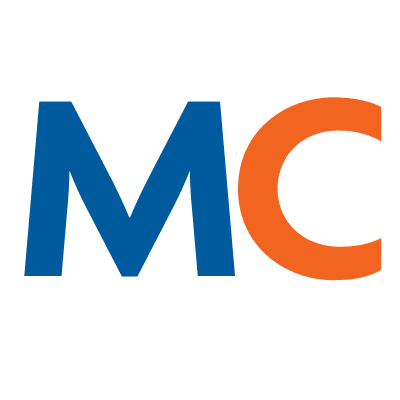- Solutions
- Solutions
- Home Health
- Hospice
- Life Plan Community
- Palliative Care
- Private Duty
- Senior Living
- Skilled Nursing
- Skilled Nursing
- Skilled Nursing Software
- Advanced Insights
- Customer relationship management
- Data and analytics
- Financial & operations management
- Marketing
- Nutrition management
- Referral management
- Regulatory compliance
- Retail management
- Resident engagement
- Revenue cycle management
- Skilled nursing interoperability
- Partners
- Blogs
- Resources
- About
- User Conference
Implications of the math behind PDPM: Outcomes matter!
Written by Krishna Bala, Ph. D., Associate Vice President, Software Engineering, MatrixCare
Effective October 1, 2019, the regulatory shift by CMS (Centers for Medicare and Medicaid) to the Patient-Driven Payment Model (PDPM) represents a critical step in the journey towards person-centric value-based care for Skilled Nursing Facilities (SNFs). PDPM is a new case-mix-centric model which focuses on the patient’s condition and resulting care needs rather than on the volume of care provided to determine Medicare Part A payment. Examining the math behind the model can give us insight into the intent and nature of the expected outcomes.
There are three clear implications of the math behind PDPM that we will examine in this article:
- Impact of Zero: Minutes don’t matter– value and outcomes matter!
- Impact of Combinatorics: Individualized nursing care with increased complexity and risk is rewarded!
- Impact of the variable Per-Diem Step-Function: Motivates shorter lengths of stay (3 to 20)!
Impact of Zero: Minutes don’t matter– value and outcomes matter!
In contrast to RUG-IV, PDPM will no longer use therapy minutes to determine reimbursement. The Math is evident here: Volume of therapy or minutes have “Zero” impact on the case-mix-adjusted component rates and therefore, no effect on reimbursement.
Consider this exciting example of the impact of the PDPM function score (Section GG) on payment: For the PT & OT component, payment for three clinical categories is lower for the most and least dependent patients (both of whom are less likely to require high amounts of therapy), compared to those in between (who are more likely to require high amounts of therapy). This non-linear relationship between resident-independence and reimbursement comes from a focus on outcomes.
Bottom line: Minutes don’t matter– value and outcomes matter!
Impact of Combinatorics: Individualized nursing care with increasing complexity and risk is rewarded!
There are five case-mix adjusted components: PT (Physical Therapy), OT (Occupational Therapy), SLP (Speech-Language Pathology), NTA (Non-Therapy Ancillaries), and Nursing. There are 16 CMGs (Case Mix Groups) for PT/OT, 12 for SLP, 6 for NTA, and 25 for Nursing. Pure combinatorics (see figure below) tells us that patients can be categorized into 28,800 possible combinations of codes for reimbursement up from 66 for the current RUG-IV. There is a further factor of two if the impact of HIV/AIDS on the nursing component is considered.
The raw increase in categories suggests that the CMS is looking to categorize care more granularly, based on individualized requirements. Furthermore, increased reimbursement is associated generally with higher complexity and combinations of care.
- PT/OT is a combination of the primary ICD-10 diagnosis (from I0020B of the MDS), the Function Score (10 items from Section GG of the MDS), and recent surgical history.
- SLP is a combination of multiple characteristics like acute-neurologic condition, SLP-related comorbidities, cognition, mechanical diet, and swallow disorders.
- NTA uses a weighted comorbidity score or extensive services taken from various MDS sections.
- Nursing is a combination of extensive services, clinical conditions, mental health, restorative nursing, and function score.

Bottom line: Individualized nursing care with increasing complexity is highly rewarded!
Impact of Per-Diem Step-Function: Motivates shorter lengths of stay (3 to 20)!
PT/OT & NTA payments are modulated by a variable per-diem Step-Function where the variable d is days.

The weekly reduction in PT/OT after 20 days is supposed to more accurately represent the cost of the resident over time. NTA is paid out at 3x the rate for days one through three, essentially providing more up-front payment for NTA. NTA is a notable addition as a separate case-mix group representing items and services not related to the provision of therapy such as drugs and medical supplies, thereby more accurately addressing costs associated with medically complex patients.
Bottom line: Shorter lengths of stay (3 to 20) are strongly promoted!
In conclusion, the path to success under PDPM requires a holistic approach that includes a focus on MDS assessments, the accuracy of ICD-10 classification, clinical documentation, adequate reporting and analytics tools, a solid process for intake and transition-of-care (e.g. timely hospital discharge diagnosis info) and, of course, billing. It is critical that skilled nursing facilities choose the right partners for this change. At MatrixCare, we have invested several years in each critical component of PDPM and welcome the opportunity to partner with SNFs.
Want to learn more? Let’s connect!
See what MatrixCare can do for you
MatrixCare
MatrixCare provides an extensive range of software solutions and services purpose-built for out-of-hospital care settings. As the multiyear winner of the Best in KLAS award for Long-Term Care Software and Home Health and Hospice EMR, MatrixCare is trusted by thousands of facility-based and home-based care organizations to improve provider efficiencies and promote a better quality of life for the people they serve. As an industry leader in interoperability, MatrixCare helps providers connect and collaborate across the care continuum to optimize outcomes and successfully manage risk in out-of-hospital care delivery.
MatrixCare is a wholly-owned subsidiary of ResMed (NYSE: RMD, ASX: RMD). To learn more, visit matrixcare.com and follow @MatrixCare on X
Related Posts

See MatrixCare in action
Start by having a call with one of our experts to see our platform in action.
MatrixCare offers industry-leading software solutions. Thousands of facility-based and home-based care organizations trust us to help them improve efficiency and provide exceptional care.
© 2025 MatrixCare is a registered trademark of MatrixCare. All rights reserved.







